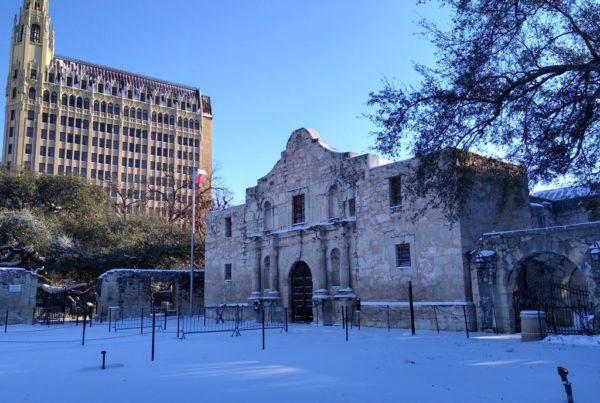A recent tweet from New York City Mayor Bill de Blasio encouraged people to move there over Austin. It got the mayor of another Texas town thinkin’.
“Or move to Stamford,” James Decker said. “I told somebody, I’m perfectly happy to be like that. Shameless frontier mayor and booster.”
Decker, a lawyer by trade, leads a town of around 3,000 people in Jones County, about a 40-minute drive north from Abilene. They have a Sonic and a Walmart, and most importantly to Decker, an Allsups. But that’s about it. A McDonald’s is a business a town this size dreams of.
While driving around town one Saturday morning, subtly waving to everyone who passes by, Decker talks about the opportunity he sees in each empty building or lot. Some buildings just need to be demolished. He envisions a park here, new houses there.
Decker wants others to see what he sees in his small town. But there are barriers to getting new people to invest here.
“We’ve got to hold up this sign. ‘Come move to Stamford, we’d love to have you. Houses are cheap, cost of living is cheap. Asterisk – the internet’s terrible but we’re working on it.’”
Without better internet, Decker said it’s hard enough to get people to move to Stamford. Let alone open a business or create jobs there.
According to data from the FCC, less than 30% of households in Stamford’s Jones County have access to broadband internet. The group Connected Nation reports, statistically, fewer people are actually subscribed to that broadband. More than 800,000 rural Texans are stuck in this digital divide.
Govl Greg Abbott listed expanding broadband internet access as a priority this legislative session. It’s a long-standing issue for some areas of the state, highlighted when school and work moved online for many during the pandemic. Over a dozen bills about broadband have been introduced so far this state legislative session and more are expected.
The federal government’s definition of broadband means enough speed to browse social media, but not stream a high-definition movie. Decker said most homes in Stamford can get internet, but it’s slow and cuts out often. And it’s expensive considering the quality and poverty level in the town.
“Just the expected norm in a big city or a suburb is what we’re aspiring to get to here,” Decker said. “If we do that, we can bring jobs to our communities. If we’re not doing that, we’re just spinning our wheels and watching the railroads pass us by.”
Jennifer Harris is the program director for Connected Nation Texas. She’s on the Governor’s Broadband Development Council that was created last legislative session, in 2019. Ironically, the group has only met virtually. They delivered their first report last year.
The council suggested in the report that a coordinated effort needs to be the first step in figuring out internet needs. Texas is one of six states in the country that does not have a documented plan to pursue internet expansion. The state also needs to designate a department to oversee the plan.
“That sense of urgency is there, the bills that have been filed and the many more that are to be filed, they can be considered immediately,” Harris said. “And I think I think we all agree, there’s no time to waste on this issue.”
Then, Harris said, they can look at gaps in internet infrastructure.
State Sen. Charles Perry, who represents one of the largest rural districts in Texas that includes Stamford and Lubbock, said he thinks there is more established infrastructure than people realize. Most Texans aren’t too far way from a fiber optic line, though, it will take money to connect them to it.
Billions of dollars were earmarked for broadband solutions in the federal COVID relief bill passed at the end of last year.
“The state role in that is to make sure those dollars are spent wisely and actually achieves a goal,” Perry said, “as well as don’t lay fiber on top of fiber or don’t be duplicative in those service areas that already have broadband.”
Broadband access isn’t a problem that can be fixed before the pandemic ends. Perry said it will be a multi-year process. He’s hopeful there will be real progress in the next three years, but some timelines suggest it could be closer to seven.
Rural Texans and Decker will be waiting. He is the kind of guy who has an analogy for everything. He compares getting the internet to smaller towns to railroad expansion in past centuries – an economic development crisis for a new era.
“The towns that were on the railroad, like Stamford, flourished,” Decker said. “The towns that didn’t get the railroad, typically, withered away. And that’s where we’re at with the internet. Because the internet is the modern way to connect to markets.”














